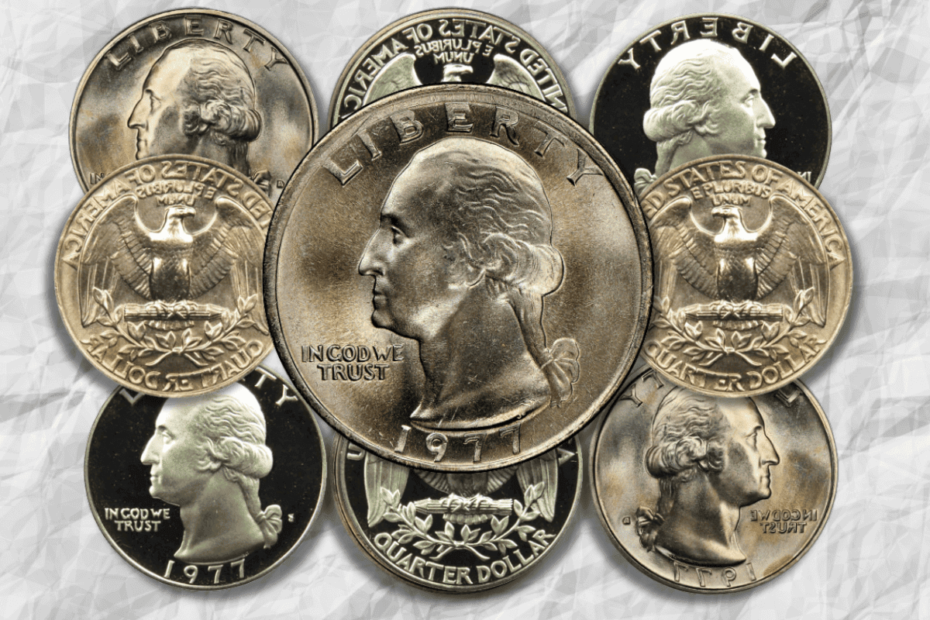Whispers of Metal: My First Encounter with a Remarkable Coin
Picture this: A dusty wooden cabinet, sunlight filtering through aged curtains, and the gentle clinking of metal against glass. As a young collector, I remember my grandfather carefully sliding open an old drawer, revealing a collection of quarters that would spark a lifelong passion for numismatics.
The 1977 quarter wasn‘t just another coin. It was a metallic time capsule, a small circular testament to an era of significant economic and technological transformation. When I first held that quarter, its weight felt different – more than just 5.67 grams of copper-nickel alloy. It represented a moment in American monetary history.
The Economic Landscape of 1977
To truly understand the 1977 quarter, we must first travel back to its origin. The mid-1970s were a complex time for the United States. Inflation was running high, reaching nearly 7% that year. The nation was recovering from economic turbulence, and every coin minted carried the subtle imprint of those challenges.
The U.S. Mint in Philadelphia and Denver were producing quarters at an unprecedented rate. In 1977, they struck a combined total of 725,080,978 quarters – a number that might seem astronomical but reflected the growing economic demands of the time.
The Metallurgical Marvel: Understanding Coin Composition
When you hold a 1977 quarter, you‘re holding a precise metallurgical composition that tells a story of technological innovation. Comprising 91.67% copper and 8.33% nickel, these quarters represented a significant shift from earlier silver-based coins.
The transition away from silver coinage in 1965 wasn‘t just a monetary decision – it was a strategic move driven by rising silver prices and economic pragmatism. Each 1977 quarter became a small ambassador of this economic adaptation.
Minting Mysteries: The Production Process
Imagine the massive machines in the Philadelphia and Denver mints, stamping out quarters with mechanical precision. Each quarter underwent a complex journey from raw metal to finished coin. The process involved multiple stages:
- Metal preparation: Precise copper-nickel alloy creation
- Blanking: Cutting perfect circular planchets
- Annealing: Heat treating to soften metal
- Striking: Applying immense pressure to imprint designs
- Inspection: Rigorous quality control
Every quarter that emerged from this process was subtly unique, carrying microscopic variations that would later fascinate collectors.
The Collector‘s Perspective: Rarity and Value
Not all 1977 quarters are created equal. While millions were produced, certain specimens can command extraordinary prices. Error coins, mint state specimens, and rare variations transform an ordinary 25-cent piece into a treasure worth thousands.
Remarkable Error Varieties
Some of the most sought-after 1977 quarters include:
- Quarters struck on incorrect planchets
- Off-center strike variations
- Double die errors
- Broadstrike specimens
A 1977-D quarter accidentally struck on a silver planchet can fetch up to $4,935 – a remarkable return on a coin originally worth just 25 cents.
Grading: The Art of Coin Evaluation
Professional coin grading is part science, part art. Experts examine factors like:
- Surface preservation
- Strike quality
- Luster retention
- Absence of damage or wear
A quarter graded MS67 might be worth $250, while an MS60 might fetch only $50. These subtle distinctions represent the nuanced world of numismatic valuation.
Market Dynamics and Collector Psychology
The coin collecting market is driven by more than just monetary value. It‘s about historical connection, the thrill of discovery, and preserving tangible pieces of our national narrative.
Younger collectors are increasingly interested in error coins and unique specimens, driving market trends and valuations. What was once overlooked might now be a prized possession.
Personal Reflection: Beyond Monetary Value
My journey as a collector has taught me that coins are more than metal and monetary value. They‘re historical artifacts, telling stories of economic shifts, technological progress, and human creativity.
Each 1977 quarter carries whispers of its time – the music of disco, the political landscapes, the technological dawns of personal computing. When you hold one, you‘re not just holding a coin. You‘re holding a moment in American history.
Practical Advice for Aspiring Collectors
For those intrigued by the world of coin collecting, remember:
- Always handle coins with care
- Invest in proper storage
- Learn from experienced collectors
- Never clean a potentially valuable coin
- Research before making purchases
The Future of Coin Collecting
As digital currencies rise, the tactile experience of coin collecting becomes even more precious. The 1977 quarter stands as a bridge between analog and digital monetary systems – a small, circular reminder of our economic evolution.
Final Thoughts
Whether you‘re a seasoned collector or a curious newcomer, the 1977 quarter offers a fascinating window into a specific moment of American monetary history. Its value extends far beyond its face value – it‘s a miniature museum piece, waiting to share its story.
Keep searching, keep learning, and remember: in the world of numismatics, every coin has a tale to tell.
